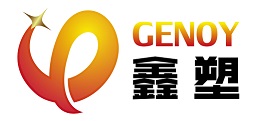
NEWS
PBT Product Overview
Polydibutyl terephthalate (PBT) is a polycondensation of 1.4-butanediol and terephthalic acid (PTA) or terephthalate (DMT). PBT was first developed by German scientist P.Schlack in 1942, followed by industrial development by Celanese Corporation in 1967.
http://5b0988e595225.cdn.sohucs.com/images/20181228/b20bc31e5b6749529698644c331ad219.jpeg
PBT product features
✓ Superior mechanical properties
✓ Excellent heat resistance
✓ Good molding performance and fluidity
✓ High dimensional stability, low moisture absorption
✓ Good surface color
✓ Excellent oil resistance and drug resistance
✓ Excellent electrical performance
✓ Excellent friction and wear resistance
PBT is easily eroded by halogenated hydrocarbons, has poor hydrolysis resistance, low notch impact strength and large shrinkage. Therefore, most of the glass fiber reinforced or inorganic fill modification, the modified PBT tensile strength, bending strength can be more than doubled, the thermal deformation temperature is also greatly increased, can work at 140℃ for a long time.
PBT market analysis
http://5b0988e595225.cdn.sohucs.com/images/20181228/de084343b04246e0a2c9da56f2cbaf40.png
In 2017-2018, the state of crude oil, economic environment, feedstock, supply and downstream demand are still the main factors affecting the price trend of PBT, of which supply and demand are the key influencing factors. China's PBT market price in 2018 was higher than that in 2017, and the price range fluctuated between 10,450-11,450 yuan/ton. Since 2018, due to the rise in raw material BDO, especially PTA prices, PBT prices have steadily increased slightly, and after entering July, PTA prices have risen sharply, coupled with enterprise maintenance, PBT prices have risen sharply due to supply and demand, and reached the peak in September, with some product prices at 15,000-16,000 ¥/t, after entering October, PBT prices are gradually falling.
PBT application field
http://5b0988e595225.cdn.sohucs.com/images/20181228/20bef8a34adf46d89847ebfa6d18d14b.png
As an engineering plastic, PBT is mainly used in industries including electronic appliances, automobiles, machinery and equipment, among which electronic appliances and automobiles/machinery are the main application fields of PBT.
http://5b0988e595225.cdn.sohucs.com/images/20181228/722883ed56b94495bc6ee03eea14ad14.jpeg
http://5b0988e595225.cdn.sohucs.com/images/20181228/0058aa53ffbf49f2a08bd002df589af4.jpeg
Domestic PBT capacity distribution
752046a973ef4497a9d4f6c6cdbdea43
With the rapid development of China's PBT resin manufacturing industry, the technical level and production capacity have been greatly improved, and the export volume has grown rapidly. At the same time, the quality requirements of PBT downstream users for raw materials continue to improve, and many downstream customers have special requirements for product properties, and some special grades of PBT resin still need to be imported to meet domestic demand. China's PBT production concentration is high, mainly distributed in East China, the region's total production capacity of up to 610,000 tons, accounting for 68.5% of the national production capacity, in addition, in Liaoning, Xinjiang, Henan, Shandong also have different degrees of distribution.
China's PBT import and export statistics from 2007 to 2017
http://5b0988e595225.cdn.sohucs.com/images/20181228/6489eb94085a4115a1e67c8d1ade08d1.png
China's PBT exports show a rapid growth trend, while imports are more stable, the number of PBT exports in 2017 was 256,000 tons, an increase of nearly ten times compared with 27,100 tons in 2007.
As far as PBT resin production technology is concerned, it is necessary to continuously optimize the production process on the basis of absorbing foreign advanced production technology, master the core technology of PBT resin production process, and improve the quality control and production management level. In the market application promotion, the requirements of modified material enterprises and downstream end customers for the quality and supply stability of raw materials continue to increase, especially the wide range of downstream applications and the diversification of customer demand is very obvious. It is necessary for resin enterprises to have rapid response ability to meet their needs, and even in some application areas or products, in-depth technology development cooperation with downstream users, and the establishment of a strong cooperative relationship with customers to further promote the integration of upstream and downstream industries.